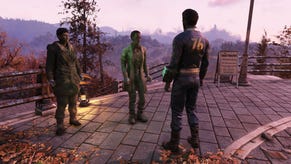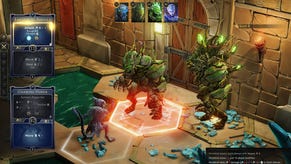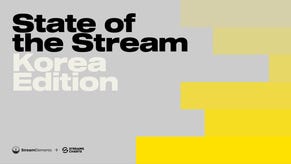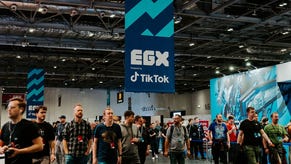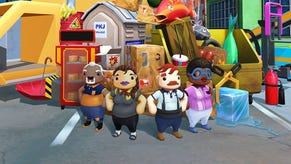"Who the hell has time to do that?"
The Quo Vadis conference opened with a frank discussion of the difficulties facing indie devs relying on social media for exposure
If it's hard to find an audience as an indie developer right now, the prevailing trends indicate that it is only likely to become harder. Hundreds of new games are hitting the mobile App Stores every single day, and Greenlight is expected to swell Steam's inventory by more than 50 per cent in the space of a single year. For the vast majority of developers making these games there will be little or no budget for marketing, only the time and effort they devote to raising awareness through social media channels.
A few years ago, the ubiquity of Facebook, Twitter and their ilk promised a democratic solution to the looming threat of overcrowding - a way of instantly communicating with millions of people that didn't cost a penny. But in a panel on the opening day of the Quo Vadis conference in Berlin, the testimony of five independent developers suggested that social media's promise has been eroded by similar forces: too many people, too much content, with the best available solutions now too expensive or too time consuming for those that need them the most.
"If you aren't posting updates on a regular basis you lose momentum. We're only two people. We can't do that"
When asked about their use of Twitter and Facebook, the entire panel offered less than enthusiastic evaluations of their own performance. Nobody present had more than 1000 followers on either platform, and for most it was just a few hundred. To have a real impact on commercial performance those numbers need to be a great deal higher, but making that happen demands an investment of time that small teams with limited resources simply can't justify.
"If you aren't posting updates on a regular basis you lose momentum," said Dominik Gotojuch, founder of the Polish developer, Robot Gentleman. "We recently had a Steam Greenlight campaign, and it was going more quickly than expected. We had to keep up with that momentum, so for six days straight we abandoned pretty much all development and concentrated on social media updates. That's the only time we have kept up with social media. On a daily basis, we're only two people. We can't do that."
Indeed, for most indie developers that would be a waste. In a three-person team, every individual will almost certainly be a specialist in an essential field, and allocation of resources is a zero sum game.
"At one point, I was dealing with about 20 messages a day on Facebook and 5 on Twitter," said industry consultant Vlad Micu of his time as head of studio at Critical Force Entertainment. "You have to start doing your calculations. Sending answer to every individual might take 10 minutes, so that's 200 minutes a day. If you're a talented programmer on that duty it's like pouring a single malt whisky into a glass of coke."
Others on the panel disagreed with this specific point. While actively increasing your followers on Twitter or Facebook might be ever more time consuming and inscrutable, these platforms still offer an essential point of contact with existing customers. Disregarding that can have real consequences, though Henrike Lode, co-founder and CEO of Lohika ApS, stressed that this kind of responsive service doesn't lead to word-of-mouth sales.
"At one point, I was dealing with about 20 messages a day on Facebook and 5 on Twitter. You have to start doing your calculations"
"There's nothing worse than seeing a two-star review for something which is in the next update," she said. "It's better to reply and tell them that, or to explain the design decision, or to say that we don't have the money for it. It's good for the community, but I don't think that generates any sales. Maybe two, but nothing relevant. Technically it's not worth it, but it's important for our integrity."
Lode's point highlights one of the key problems facing any developer seeking to build their audience through social media. If your following is too small it won't make a significant difference to whether your game is successful or not, but it might be the right size to stay on top of resolving your players' issues and managing the needs of your community. The more followers you have, however, the more demanding - and therefore expensive - that community becomes. The ideal is a combination of a large social media audience and enough capital to make the best possible use of that audience without neglecting product development. That could mean hiring someone to specifically handle social media, or more programmers and artists to give an existing member of the team more time to engage with the public.
One example of this, mentioned several times over the course of the panel, is the Dutch indie developer Vlambeer, with co-founder Rami Ismail a constant presence on Twitter. Now, Ismail is almost certainly one of those people for whom an outlet like Twitter feels easy and natural, but the success of Vlambeer's games will certainly make his engagement with social media channels far easier to justify. Vlambeer, the panel's moderator points out, is now doing some interesting experiments on Twitch for its new game, Nuclear Throne. Has anyone on the panel, he asked, tried anything similar?
Lode laughs. "Does anybody have time for that?"
"Yeah," Micu replies. "I really wonder who the hell has time to do that."


